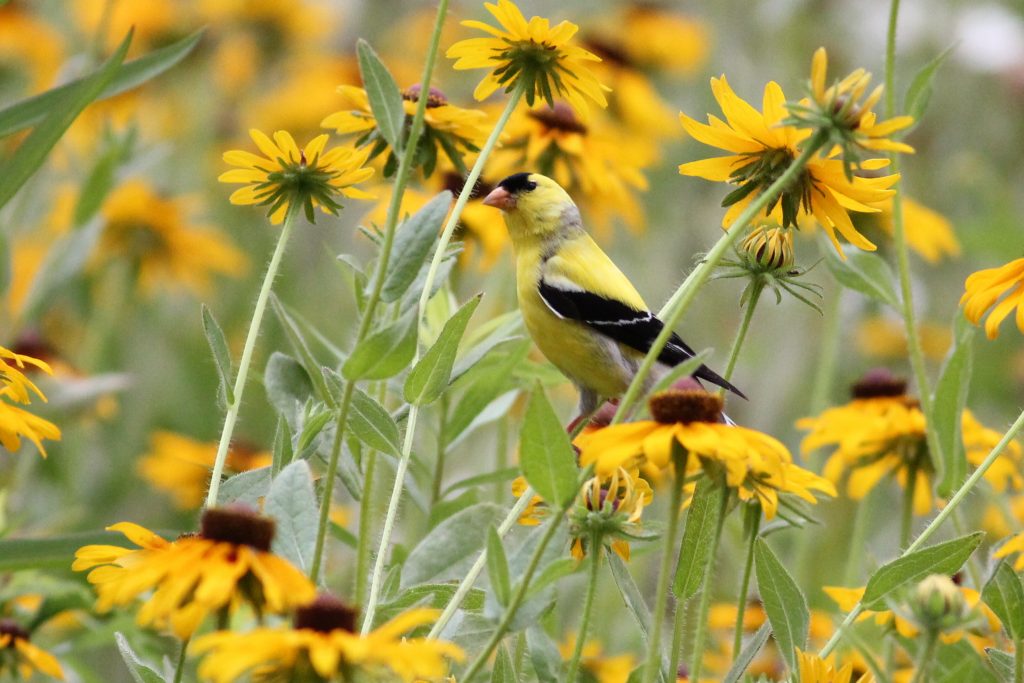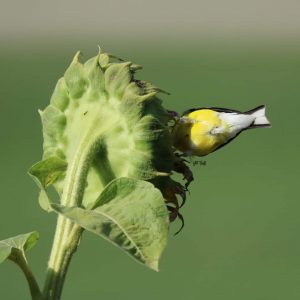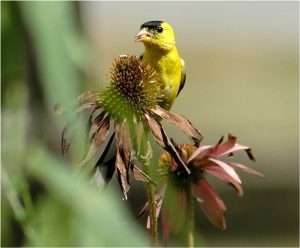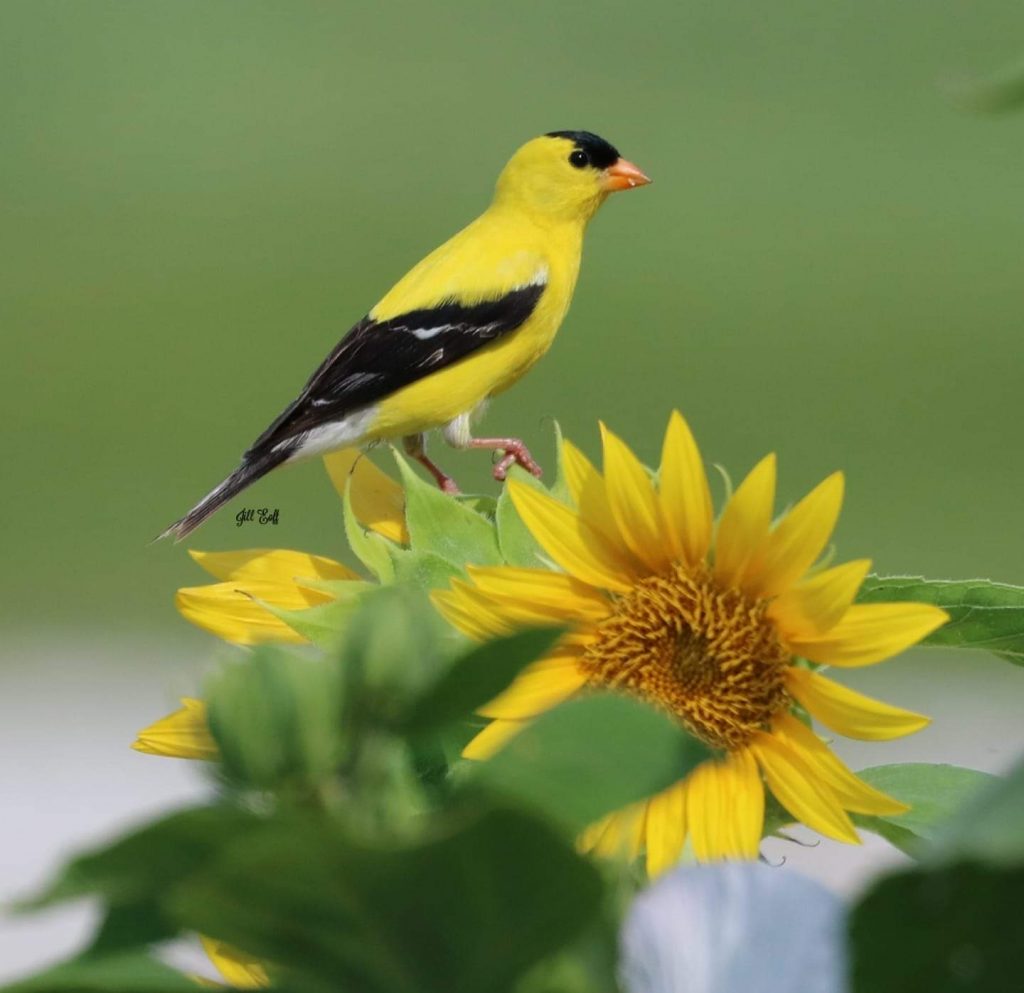
American Goldfinch male
Where have my Goldfinches gone? This is a question that we hear often at the store this time of year. Goldfinches nest later than many other birds in our area. When they establish their territories, they don’t allow other pairs in that area. So, unlike the spring when they were migrating through in large numbers, you will have one pair that calls your yard part of their territory (if you are lucky)!
Nesting Prep

Goldfinch on Sunflower (Photo by Jill Eoff)
The male advertises his territory with a beautiful, long, sweet melodic song. Part of the territorial behavior consists of him flying in large circles around the area, singing as he flies, advertising that the area is his and available to one female to share with him. This behavior continues as she constructs the nest and she sits on their eggs.
Because she alone incubates those eggs, the male will bring her food as she continues to sit on the nest. How sweet is that? If you are seeing a single male at your feeders, this is the reason why. With natural food sources becoming abundant this time of year, these fresh resources are used by the finches in addition to quick stops at the feeder.

American Goldfinch male (Photo by Rosann Kovalcik)
Time to Hatch!
When the young hatch, the female will now come to the feeder for short periods, to feed herself and to carry seed back to the nestlings. When you see her at the feeder, you know the eggs have hatched. Both parents feed the young birds seeds, from feeders and natural sources.
Within a few weeks after they hatch, young goldfinches are following parents around, begging for food with a characteristic, high-pitched “chippee, chippee” call. Seeing them beg with open beaks and wings fluttering is a summer delight.
While there is less activity at your feeder, fill it only part way. The seed needs to be fresh if it is going to compete with the natural food sources that are available. Using a mix of nyjer and fine sunflower chips is a good strategy as the sunflower chips offer high protein and fat content, which the birds need this time of year. Using Feeder Fresh, a silicate additive, will help your seed stay fresh and moisture free. When filling the feeder, add the new seed and mix it about with the older seed to avoid clumping. Once finch activity picks up and those goldfinch families are coming to eat, you can start filling the feeder with a greater quantity of seed.

American Goldfinch male (Photo by Jill Eoff)
Enjoy your birds!!
Rosann Kovalcik, Owner
Wild Birds Unlimited, Grosse Pointe Woods
Have you joined our email list? Click here to sign up, it’s free and gives you access to sales, coupons, nature news, events, and more!
